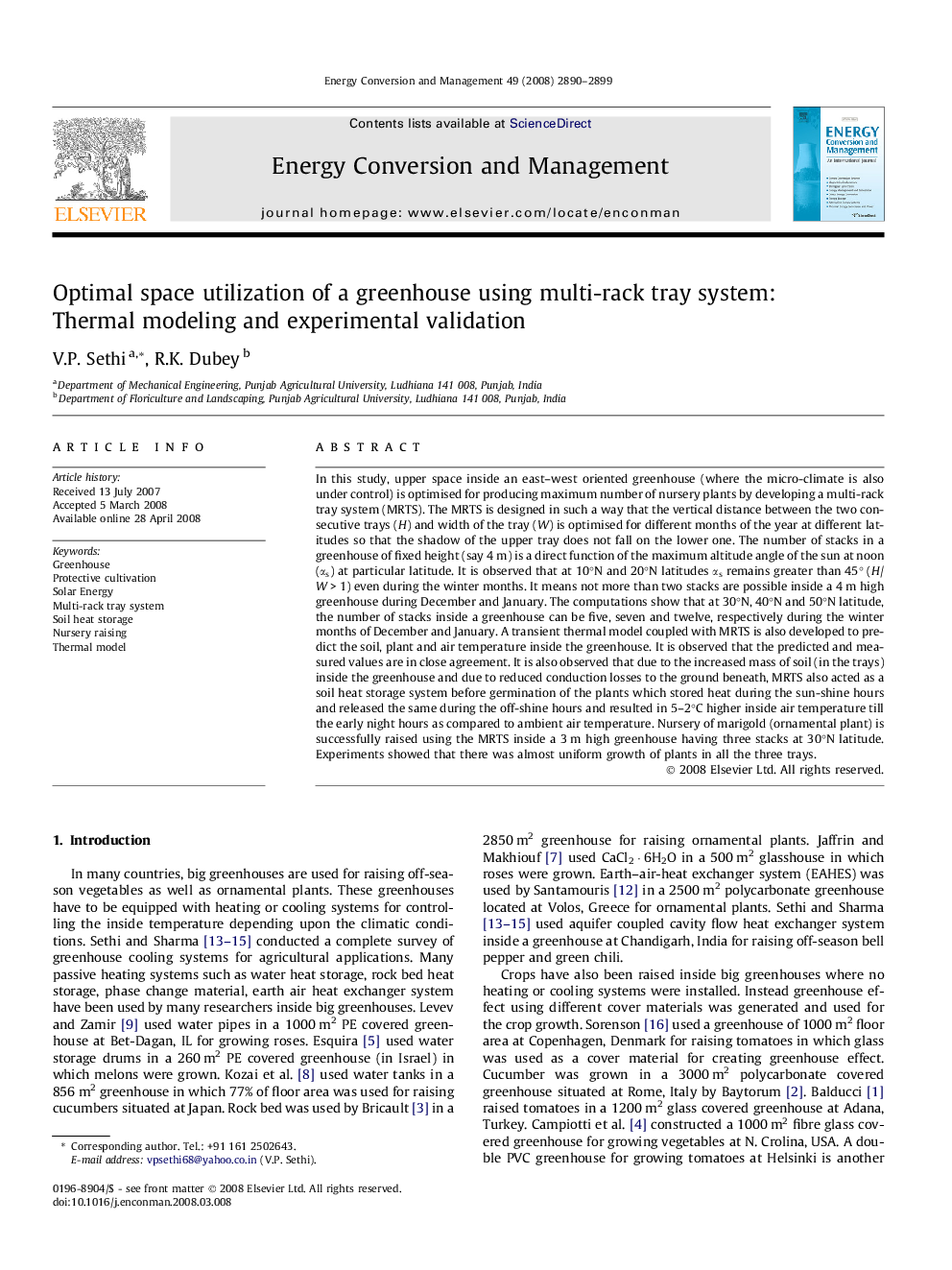| Article ID | Journal | Published Year | Pages | File Type |
|---|---|---|---|---|
| 762024 | Energy Conversion and Management | 2008 | 10 Pages |
In this study, upper space inside an east–west oriented greenhouse (where the micro-climate is also under control) is optimised for producing maximum number of nursery plants by developing a multi-rack tray system (MRTS). The MRTS is designed in such a way that the vertical distance between the two consecutive trays (H) and width of the tray (W) is optimised for different months of the year at different latitudes so that the shadow of the upper tray does not fall on the lower one. The number of stacks in a greenhouse of fixed height (say 4 m) is a direct function of the maximum altitude angle of the sun at noon (αs) at particular latitude. It is observed that at 10°N and 20°N latitudes αs remains greater than 45° (H/W > 1) even during the winter months. It means not more than two stacks are possible inside a 4 m high greenhouse during December and January. The computations show that at 30°N, 40°N and 50°N latitude, the number of stacks inside a greenhouse can be five, seven and twelve, respectively during the winter months of December and January. A transient thermal model coupled with MRTS is also developed to predict the soil, plant and air temperature inside the greenhouse. It is observed that the predicted and measured values are in close agreement. It is also observed that due to the increased mass of soil (in the trays) inside the greenhouse and due to reduced conduction losses to the ground beneath, MRTS also acted as a soil heat storage system before germination of the plants which stored heat during the sun-shine hours and released the same during the off-shine hours and resulted in 5–2°C higher inside air temperature till the early night hours as compared to ambient air temperature. Nursery of marigold (ornamental plant) is successfully raised using the MRTS inside a 3 m high greenhouse having three stacks at 30°N latitude. Experiments showed that there was almost uniform growth of plants in all the three trays.
